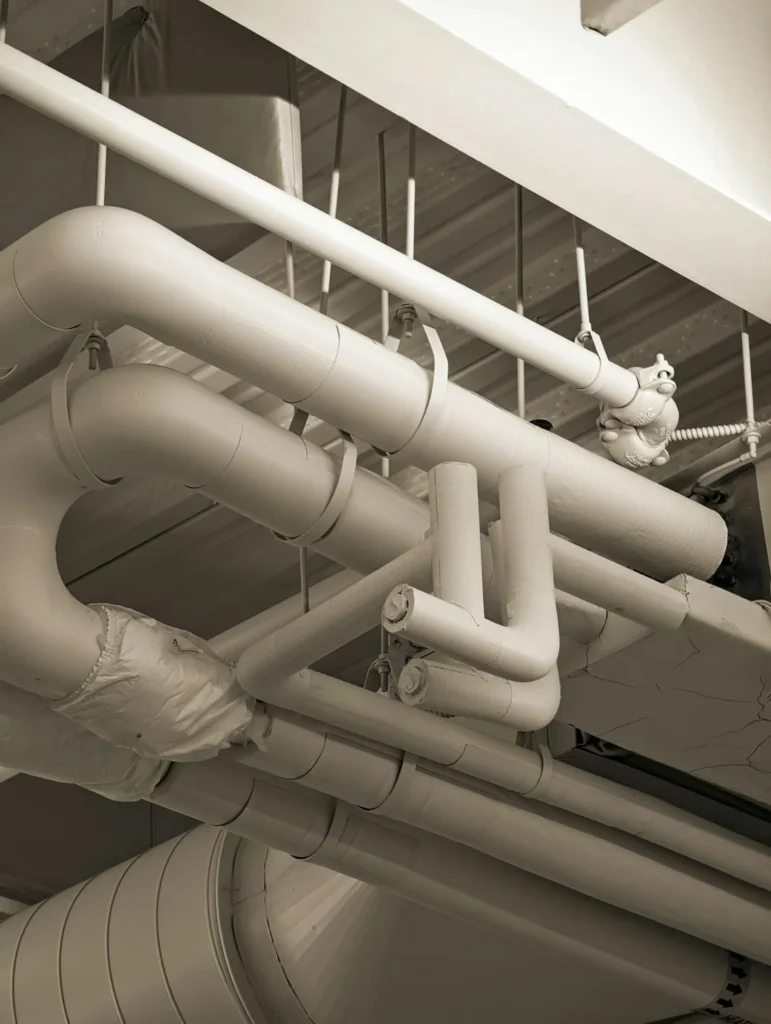A commercial fire is arguably the most destructive risk a UK business can face. The flames themselves are only the start; the resulting structural damage, corrosive soot, smoke odour, and extensive water damage can halt operations for months, often leading to insurmountable financial losses. Yet, in nearly every instance, the ignition source is not some complex, unforeseeable disaster, it’s one of a handful of preventable hazards.
For any business owner or facilities manager, mitigating risk starts with a proactive, detailed understanding of what commonly ignites. The key to effective response is equally critical: you can only choose the right extinguisher if you know what fuels the fire. That’s why we’ve compiled a definitive guide to the common causes of workplace fires and the essential steps you must take to prevent them.
Skip to:
Electrical and mechanical failure
The biggest technical threats: Electrical and mechanical failure
These causes are often hidden from sight, requiring mandatory professional inspection and maintenance to detect and address.
Faulty electrics and overloaded circuits
Electrical faults consistently rank as the number one cause of commercial and workplace fires across the UK. The risk arises from several factors:
Degrading infrastructure: Older buildings may have outdated or faulty wiring that heats up or arcs, igniting surrounding wall and ceiling materials.
Damaged appliances: Frayed wires, non-compliant plugs, or damaged power leads on appliances are easily overlooked but pose a serious and immediate threat.
Circuit overload: The practice of ‘daisy-chaining’ extension leads or plugging multiple high-wattage items into a single socket is a fast track to overheating and failure.
Actionable tip: Stay compliant with UK legislation by mandating regular Electrical Installation Condition Reports (EICR) for your premises wiring and PAT testing for all portable appliances. These checks ensure your electrical infrastructure can safely handle the demands of your modern business.
Overheated machinery and equipment
While office life seems safe, even photocopiers and desktop computers can overheat. The risk is magnified in manufacturing facilities, workshops, and server rooms where machinery operates continuously. Poor maintenance allows dust and debris to build up around components, trapping heat and increasing friction, which can eventually lead to ignition.
Actionable tip: Implement a strict, documented maintenance schedule for all industrial machinery. Ensure server rooms have dedicated, clean ventilation and are regularly inspected to prevent dust accumulation. Always power down non-essential equipment at night or during prolonged periods of inactivity.
Cooking and kitchen fire hazards
Regardless of whether your workplace has a small staff kitchenette or a large commercial catering facility, the presence of heat, fats, and oils introduces a high-risk factor.
Grease, fat and flammable vapours (Class F risk)
Fires involving cooking oils and fats (known as Class F fires) are incredibly dangerous because they spread rapidly and cannot be extinguished with water. In commercial kitchens, grease deposits build up in extraction systems and ventilation ducts, acting as highly combustible fuel. If a cooking surface or deep-fat fryer is left unattended, the oil can reach its auto-ignition temperature quickly.
The critical importance of knowing the fire class cannot be overstated. Applying the wrong extinguisher is dangerous. For instance, using water on a Class F fire will cause the fire to explode. This is why understanding the official UK Classification of Fire system is vital for equipping your workplace properly.
Actionable tip: Mandate fire safety training, schedule professional deep cleaning of all kitchen extraction systems, and ensure specialised wet chemical extinguishers are readily accessible for high-risk cooking areas.
Preventing human error and environmental negligence
Many common causes of workplace fires stem from moments of carelessness or a lack of policy enforcement. These are the most preventable risks through thorough training and clear procedures.
Improper waste management
Materials found in workshops, print rooms, or industrial environments such as oily rags, chemical-soaked cloths, and certain flammable solvents can generate heat as they break down. If improperly stored in piles or non-compliant containers, this heat can build up until the material spontaneously ignites.
Actionable tip: Use only fire-safe, heavy-duty metal bins with self-closing lids for the disposal of any potentially combustible materials. Establish clear, separate protocols for chemical and standard waste removal.
Smoking material and external ignition
Despite robust internal non-smoking policies, carelessly discarded smoking materials remain a major external ignition risk. A cigarette butt, often thoughtlessly thrown down near a loading bay or an exterior structure, can ignite dry leaves, stored pallets, or debris, leading to a fire that quickly spreads to the building interior.
Actionable tip: Designate clearly defined, distant smoking zones. These zones should be placed well away from entrances, windows, and flammable storage areas and equipped with fire-safe metal bins for disposal.
When prevention fails: UK fire damage restoration plan
While diligent fire prevention is the goal, accidents and unforeseeable events can still occur. When they do, the aftermath is often worse than the fire itself. The immediate dangers resulting from a fire are often unseen, including the airborne toxins, corrosive soot residue, and pervasive smoke odour that penetrates walls and furnishings.
It is critical to act immediately, as the secondary damage can quickly ruin salvageable assets. The most effective way to protect your business’s future is by following a structured and rapid recovery process.
To ensure your premises are safe, habitable, and compliant with all UK health standards, you need a defined strategy. Understanding and implementing a comprehensive Fire Damage Restoration Plan is your business continuity lifeline.
Minimise your risk and ensure business continuity
Understanding the common causes of workplace fires is the foundation of a successful risk management strategy. It allows you to move beyond generic safety measures and target the specific vulnerabilities of your unique premises.
If you have suffered a fire, do not delay. Ideal Response is your commercial partner, offering immediate, 24/7 emergency fire damage restoration services across the UK. We specialise in the complex task of soot removal, odour neutralisation, and structural restoration, getting your business compliant and back on its feet with minimal downtime.
Contact Ideal Response immediately for rapid, professional fire damage mitigation and restoration services.
Need to speak to a specialist urgently? Call 01622 926 505
FAQs
What is the main UK law governing workplace fire safety?
The primary legislation is the Regulatory Reform (Fire Safety) Order 2005 (FSO). Under this law, the person responsible for the premises (the ‘Responsible Person’) must carry out a detailed fire risk assessment, implement fire prevention measures, and ensure all staff are properly trained.
Why is it crucial to know the different classifications of fire?
Knowing the classifications (e.g., Class A, B, C, F) is critical because using the wrong type of extinguisher can be ineffective or even dangerous. For example, using water on a Class F (cooking oil/fat) fire or a Class E (electrical) fire can cause the fire to rapidly expand, putting lives at risk. You must match the extinguisher to the fuel source.
How often should we conduct PAT testing and EICR inspections?
While the FSO doesn’t specify exact intervals, industry best practice recommends:
PAT (Portable Appliance Testing): Annually for high-risk equipment (e.g., in workshops/kitchens) and every 2-4 years for lower-risk office equipment.
EICR (Electrical Installation Condition Report): Typically every 5 years for commercial premises. Your documented risk assessment should determine the specific frequency.
If a fire is quickly put out, is there still a risk of long-term damage?
Absolutely. Even small fires cause significant secondary damage. The main dangers are:
Soot and Smoke Residue: This residue is highly acidic and corrosive. It penetrates materials (walls, electronics, metals) and can continue to degrade assets long after the fire is extinguished.
Smoke Odour: This strong, persistent odour is difficult to remove without professional intervention and renders premises unusable.
Water Damage: Firefighting efforts often introduce extensive water damage, leading to mould growth if not dried out immediately.
What is the first thing a business should do immediately after a fire incident?
After ensuring the safety of all personnel and contacting the emergency services (if necessary), the first step is to contact a professional fire damage restoration company. They can secure the premises (board-up services) and immediately begin mitigation work—crucially, stopping the corrosive damage from soot and addressing water damage to save time and reduce costs related to your Fire Damage Restoration Plan and insurance claim.

Chris Hedges - Head of Marketing
With over 25 years' experience, Chris is adept at defining and driving strategy, while also enjoying hands-on operational delivery. He believes in an equal blend of creativity and analytical scrutiny, always finding inventive ways to achieve objectives, underpinned by evidence. Chris’s philosophies are simple: don't overcomplicate, always prioritise customer experience, and bend the rules just enough to cut through the noise and drive momentum and growth.





















